Late Spring
October
October is the time to really get the summer vegetable garden on the move.
Sow these vegies: Asian greens, beans, beetroot, broccoli, cabbage, carrots, celery and celeriac,
cucumber, lettuce, leeks, mustards, parsnip, peas, silverbeet, tomatoes,
cucumber, rockmelon*, pumpkin*, sweet corn, watermelon*, zucchini: just about
everything in fact!
Seeds of summer vegies will germinate more quickly if sown under under
glass or in a cloche to keep them warm.
Plant: Potatoes. Seedlings of summer vegies such as tomatoes can be grown on in pots in a
greenhouse or cloche before planting out into the garden in November.
* Choose varieties of rockmelon, watermelon and pumpkin that have short maturing times.
Try Sweet Granite rockmelon, Sweet Siberian watermelon and Butternut pumpkin.
Get seeds and seedlings off to a quick start by sowing and growing up under glass or in a cloche.
Prepare garden beds well in advance with layers of manure and pea straw. For fruiting plants like
tomatoes and zucchini, add some potassium in the form of wood ash or potassium sulphate. Not too
much: it's easier to add a bit more if needed than to get rid of an excess.
Mulch the entire garden while the soil is still damp. If using fresh woodchips, add some blood and
bone so the soil nitrogen isn't depleted as the mulch breaks down.
And don't forget the flowers!
A diverse array of plants will attract a diverse population of insects and help create a balanced garden
habitat with fewer pest problems.
Many flowers are edible and make for lovely bright salads.
Try nasturtiums, calendula, borage, heart's-ease and other pansies, as well as flowers from herbs such
as coriander and rosemary, and flowers of broccoli, kale, rocket or mustard.
(Always check before eating flowers you are not sure of.)
November
Throughout November keep planting out seeds or seedlings for summer vegetables.
Sow these vegetables now: Asian greens, beans, beetroot, broccoli, some cabbage varieties -
check the seed packet), Chinese cabbage, celeriac, celery, cucumber, leek, lettuce, mustards, parsnip,
pumpkin, radish, silverbeet, squash, sweet corn, zucchini.
Sow these herbs now: chives, coriander, dill, fennel, parsley.
Plant seedlings of: tomatoes, chilli, capsicum, eggplant.
Plant: potato tubers.
Ready to harvest now: the last of the broad beans, new potatoes, loose leaf lettuce, parsley in
abundance, snap peas, rocket, nasturtium flowers, leeks, kale, mandarins, tangelos, lemons, limes,
the last of the grapefruit.
Leave some of the gone-to-seed vegies for flowers. This will create diversity in the garden, food
for bees and other beneficial insects and seeds for future crops.
Coriander flowers (below) are much loved by bees and hover flies. Collect the seeds as they dry off.
They are wonderfully aromatic - many times better than what you buy in the shop. Use them in curries,
or with carrots sauteed in a little butter.
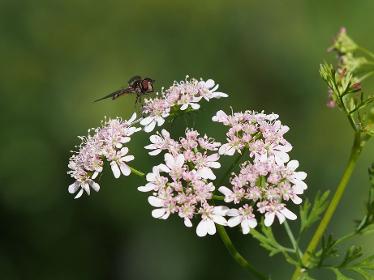
Beneficial insects like this hoverfly
love coriander flowers.
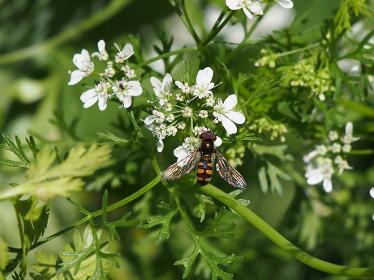
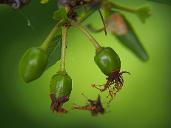
Promise of things to come: tiny Satsuma plums.
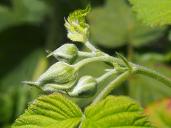
Flower buds on a thornless loganberry.
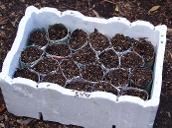
Newspaper pots ready for seedlings.
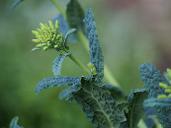
Kale flower buds are delicious.